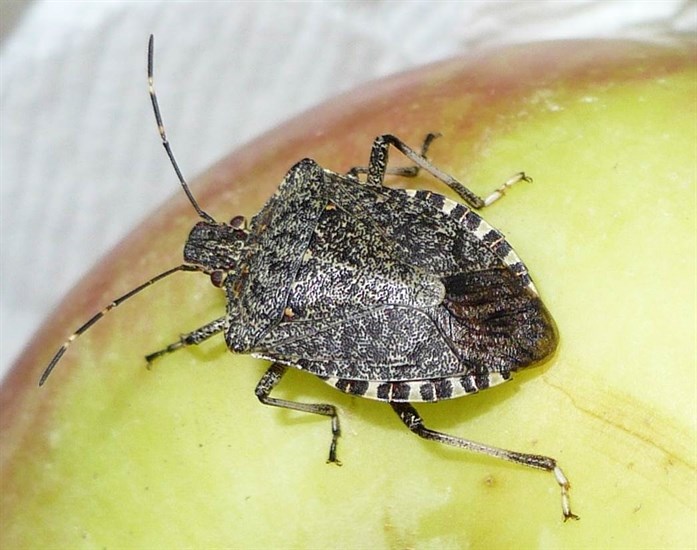Destructive, invasive stink bugs prompt provincial pest warning
Invasive stink bugs are increasing in numbers, prompting the B.C. government to issue a warning declaring the destructive pests a nuisance.
Brown marmorated stink bugs are from Asia and are causing serious damage to agricultural crops, feeding on more than 100 different plant species, according to the government website.
First detected in the United States in 2002, the stink bug has since spread through the states and into areas in the Lower Mainland, Vancouver Island and the Okanagan Valley.
This year, high numbers have been reported in Kelowna's downtown.
READ MORE: Stink bugs are in abundance in the Okanagan this fall
In 2010, an estimated loss of $37 million due to brown marmorated stink bug feeding was reported by the apple industry in the Mid-Atlantic States, according to the province.
The government is asking growers and homeowners to send photos and samples of the stink bugs to the B.C. Ministry of Agriculture offices.
As adult marmorated stink bugs can be confused with other native brown stink bugs and western conifer seed bugs, the government has provided photos and indicators on their site to help people identify them.
Adults are shield-shaped and between 13 and 17 millimetres long. They are brown marbled in appearance, alternating brown and white markings on the out edges of the abdomen.
READ MORE: Stinky seed bug boom bugging residents in Shuswap, Kamloops and Okanagan
They can be distinguished from other stink bugs by the presence of distinctive white bands on the last two antennal segments.
There are five immature bug, or nymph, stages where bugs range in size from 2.4 to 12 mm in length and do not have fully developed wings.
First instar nymphs are bright orange to red coloured, second instar nymphs are black, and in later stages the bugs are pear-shaped and brown with white markings on their abdomens and legs, and white band on the last two antennal segments.
Adults and nymphs feed on plants, fruits and vegetables, resulting in dead areas on fruits and leaves. The bugs can contaminate grapes by tainting wine at crush time.
Homeowners are asked to remove the pests by hand, sweeping or a shop vacuum, and to seal off any access points into the home. The use of insecticides is not recommended.
To contact a reporter for this story, email Shannon Ainslie or call 250-819-6089 or email the editor. You can also submit photos, videos or news tips to the newsroom and be entered to win a monthly prize draw.
We welcome your comments and opinions on our stories but play nice. We won't censor or delete comments unless they contain off-topic statements or links, unnecessary vulgarity, false facts, spam or obviously fake profiles. If you have any concerns about what you see in comments, email the editor in the link above.




